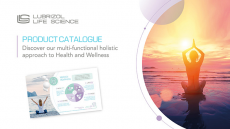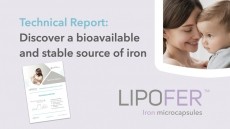Pakistan opts for NaFeEDTA for fortification programme
and mineral premix containing Akzo Nobel's Ferrazone iron for
Pakistan's National Wheat Fortification Program - a contract that
underscores confidence in the science behind the ingredient.
Pakistan's Ministry of Health aims to introduce universal fortification of wheat flour with iron and folic acid by the year 2013. It is hoped that this will reduce iron deficiency anaemia in children from 30 per cent to 10 per cent, and in women of reproductive age from 50 per cent to 18 per cent. The incidence of neural tube defects in newborns is expected to halve. Fortitech was awarded the contract following a bidding process which involved the presentation of comprehensive technical and financial information. Pakistan's programme is funded in part by GAIN - the Global Alliance for Improved Nutrition. Dr Regina Moench-Pfanner, senior manager of the food fortification programme, said: "This is an exemplary example of a public-private partnership to improve the quality of lives of the population, which GAIN has championed since its inception. We congratulate the Pakistan Government in taking this concrete step." New research published in The Lancet last week showed Ferrazone NaFeEDTA (sodium iron EDTA) to be much more effective in raising iron levels than electrolytic iron, despite the electrolytic form being the most frequently used iron supplement in flour. Scientists from the Centre for Public Health Research, Nairobi, and Wageningen University, Akzo Nobel, Unilever, and the Meander Medical Centre in the Netherlands, looked at the effects of fortifying porridge with either high-dose NaFeEDTA (56mg/kg), low-dose NaFeEDTA (28mg/kg) or electrolytic iron (56mg/kg) on the incidence of anaemia, iron-deficiency anaemia and general iron deficiency 516 children in Kenya. The researchers found that, compared to the placebo group, the prevalence of iron-deficiency anaemia dropped by 89 per cent for the high-dose NaFeEDTA group, and by 48 per cent for the low-dose NaFeEDTA group. No reduction in any iron status marker was observed in the electrolytic iron group. The researchers suggest that the EDTA enhances absorption by preventing the iron and cereal binding, which would normally prevent the iron being absorbed in the intestines. The results prompted Dr Ted Greiner from the international non-profit health organisation PATH to say in a commentary in the same journal that all the world's cereals should be fortified with iron, in the interests of global public health. According to a 2002 World Health Report, iron deficiency ranks among the top ten causes of mortality and deficiency globally. It is thought to account for 20 per cent of the estimated 500,000 maternal deaths each year, and 30 per cent of non-pregnant women aged between 15 and 50 years in the developing world are thought to be anaemic. Fortification has been proposed as the best approach to alleviating the problem, since take-up of supplementation can be poor due to side effects such as black faeces and a metallic iron taste.










